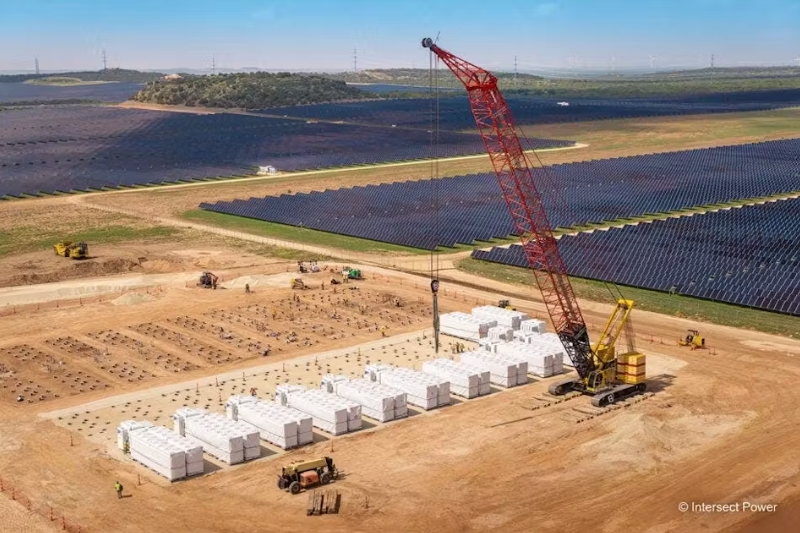
Texas energy storage project under construction. Image credit Intersect Power
The Texas grid, already hosting nation-leading utility-scale wind power and a rising amount of solar capacity, also is accelerating its adoption of battery energy storage systems (BESS) that can be key components of microgrids, according to reports.
As of Sunday, grid operator Electric Reliability Council of Texas (ERCOT) reported more than 8 GW of total installed energy storage resource capacity within the grid.
A new projection by battery storage analysis platform Modo Energy forecasts that the BESS buildout within ERCOT could double to more than 18 GW by the end of 2025. The growth of newly installed battery storage capacity connected to the Texas grid has nearly tripled just in the past year, according to Modo Energy.
Close to 7.5 GW of new battery storage capacity is planned to be under construction just this year, according to an earlier report by the Texas Tribune. Some of it is utility-scale battery storage paired with solar for providing grid services, but some parts of it are part of planned microgrid projects within the state.
Last year, Texas voters approved the $10 billion Texas Energy Fund to support investment in bolstering the state’s electricity in the wake of several energy crises, including Winter Storm Uri in February 2021 and summer peak loads threatening reserve capacity on the ERCOT system. Some $1.8 billion of that $10B Texas Energy Fund allocations is marked for lower carbon distributed energy such as microgrids, solar and batteries.
Electric vehicle manufacturer and battery technology firm Tesla also moved its headquarters to Austin and built a new Gigafactory near there. Many industry leaders expect battery storage capacity to accelerate even further if lithium prices continue to fall.
Battery storage and solar capacity are seen as ideal tools for on-site power and microgrids, since energy storage can balance and smooth the intermittencies of renewable energy. Earlier this summer, the U.S. Department of Energy announced $450 million in funding for projects to support power resiliency by combining residential solar and batteries in Puerto Rico.
Throughout the U.S., battery storage capacity has expanded 180% since the end of 2021, according to a report earlier this year by S&P Global. The California Independent System Operator was the regional transmission grid with the biggest addition of battery storage capacity, at 1.08 GW, with ERCOT second at 1.05 GW, according to the report.
Energy storage is a key component of many microgrids and is a key subject matter which will be in focus at the Microgrid Knowledge Conference 2025 which will be April 15-17 at the Sheraton Dallas. The Microgrid Knowledge Conference Call for Speakers is now open and seeking content around battery storage’s role in the microgrid ecosystem.